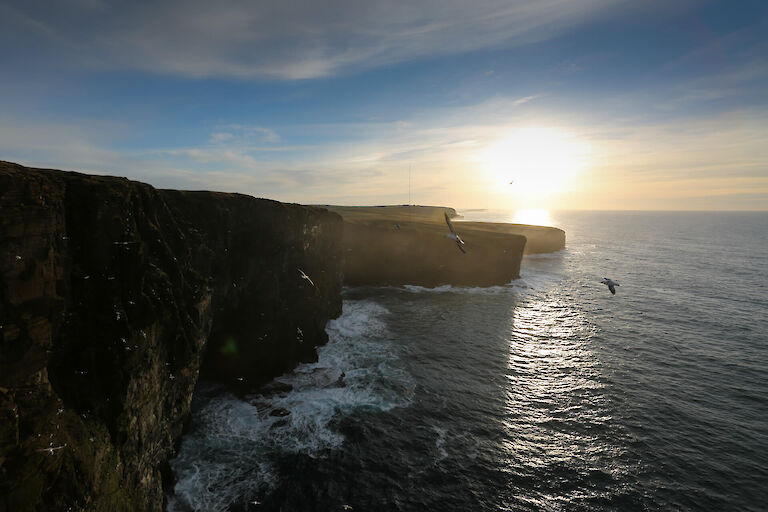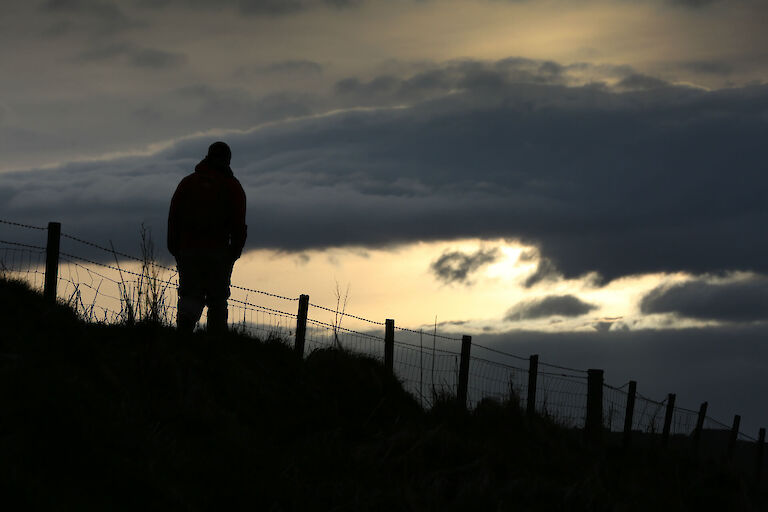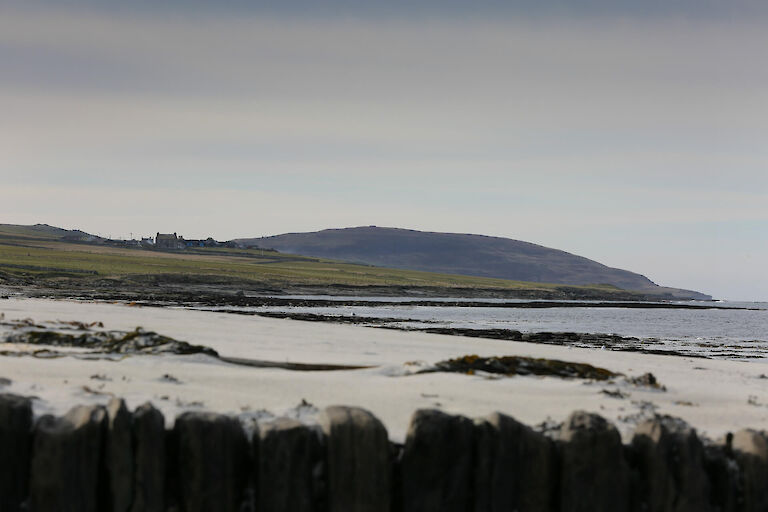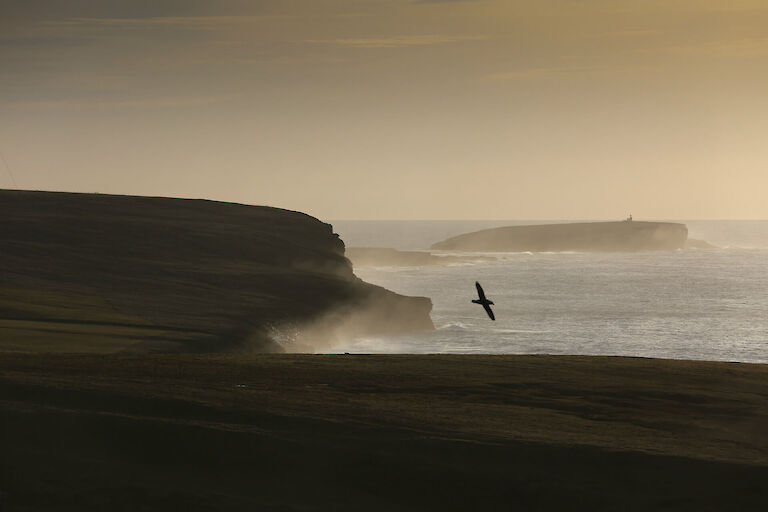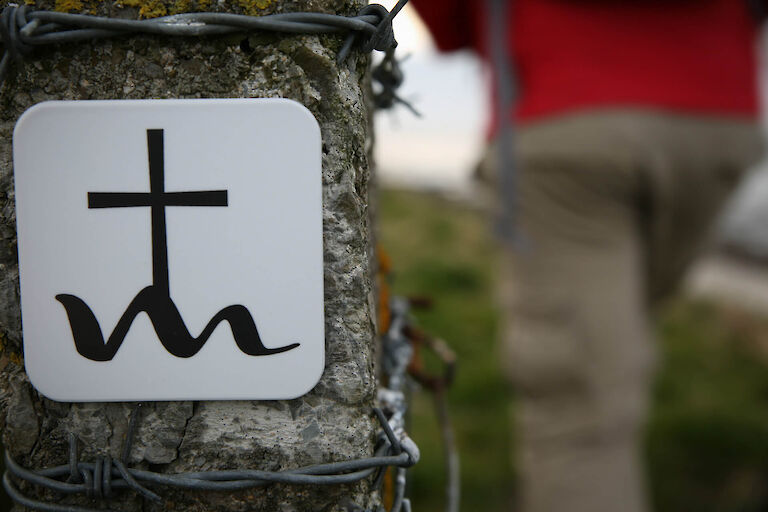The St Magnus Way is not a beautifully manicured lawn or a continuous piece of tarmac. It is a challenging and arduous long distance walk with a huge variety of walking surfaces.
The Weather
The biggest determinant of your experience of the St Magnus Way is the weather. Orkney is a scattering of islands regularly buffeted by wind. It is rare to have a week of uninterrupted wind and rain, but equally it is rare to have more than a few days of settled weather. You should therefore expect to get wet and discouraged at least once each day during your pilgrimage. If there are storms, don’t walk – take advice from those you are staying with if you are in doubt. Whilst this may be frustrating, if you’re making a trip especially to walk the St Magnus Way, build in some extra days to allow for this. There is plenty else to do in Orkney if you end up with spare time.
The ground absorbs a large amount of rainfall and dries again remarkably quickly but underfoot conditions can be very wet, particularly in the spring and autumn. Stout walking boots are essential and you may find gaiters helpful in keeping mud out. You should expect to get muddy – we are working to improve drainage and path conditions on the muddiest sections but there are weeks where the weather dictates that mud will be a regular feature.
The Coast
There are sections of coastal walk with significant exposure. You are expected to use common sense and keep away from the edge but on windy days you’ll want to be further back. At no point does the St Magnus Way lead you along a cliff edge – you are usually several metres back. The views of the dramatic coastline are exhilarating but if you don’t have a head for heights you may find this a challenge, especially where there are geos – narrow clefts formed by the sea’s battering of the cliffs.
The Roads
There are sections on the road. Ideally we would love to have as much of the route off road as possible – and we are working towards this over the next few years. In the meantime, some road walking is necessary. The convention is to walk on the right hand side of the road – facing oncoming traffic. During the day, most roads in Orkney are quiet, but you should keep an eye and an ear out for traffic in both directions. Drivers are used to pedestrians on the road and will usually give you a wide berth but it is worth being ready to step off the road when required. Be aware of drainage ditches – it is easy to step sideways into a ditch, mostly this is just embarassing but it is easy to turn an ankle which could spoil your day’s walking.
The Land
There are sections with sheep in the fields and cattle in adjacent fields. When walking through sheep fields it is best to remain in single file since if you fan out the sheep think you are driving them to another location. We have decided not to mix people and cattle – this can be annoying as there are sections where the obvious route is not taken, since there are stock in the fields and no stock fencing to keep people and cattle apart. We are working with landowners to address this as much as possible, but this inevitably takes time and depends on finance and willing. Cattle in neighbouring fields may be curious or wary of you as you walk, especially if you have a dog.
The Land Reform Act states that dogs must be under close control - as soon as you dog is not under close control you forfeit all rights of access to the land you are on. If you have a very well trained dog who will stay at your heel regardless of other distractions, please let us know the secret. Otherwise, you may find the only way to ensure close control is to use a lead. Failure to control your dog not only forfeits your right of access, it can endanger stock and ruin the good relations with landowners that we are working very hard to maintain. At no point should you be in a field with cattle – but the advice is that if you are amongst cattle with a dog on a lead, let the lead go and the dog will find safety itself. You are much more likely to spook the cattle and risk injury if you hold on to your dog.
The Scottish Outdoor Access Code
Follow the Scottish Outdoor Access Code
• Keep dogs under control at all times
• Wear suitable footwear and be prepared for variable weather
• Let someone know your route and when you will return
• Avoid disturbing livestock or crops
• Leave gates as you found them
• Respect wildlife and take special care in the breeding season
• Bring your litter away with you
